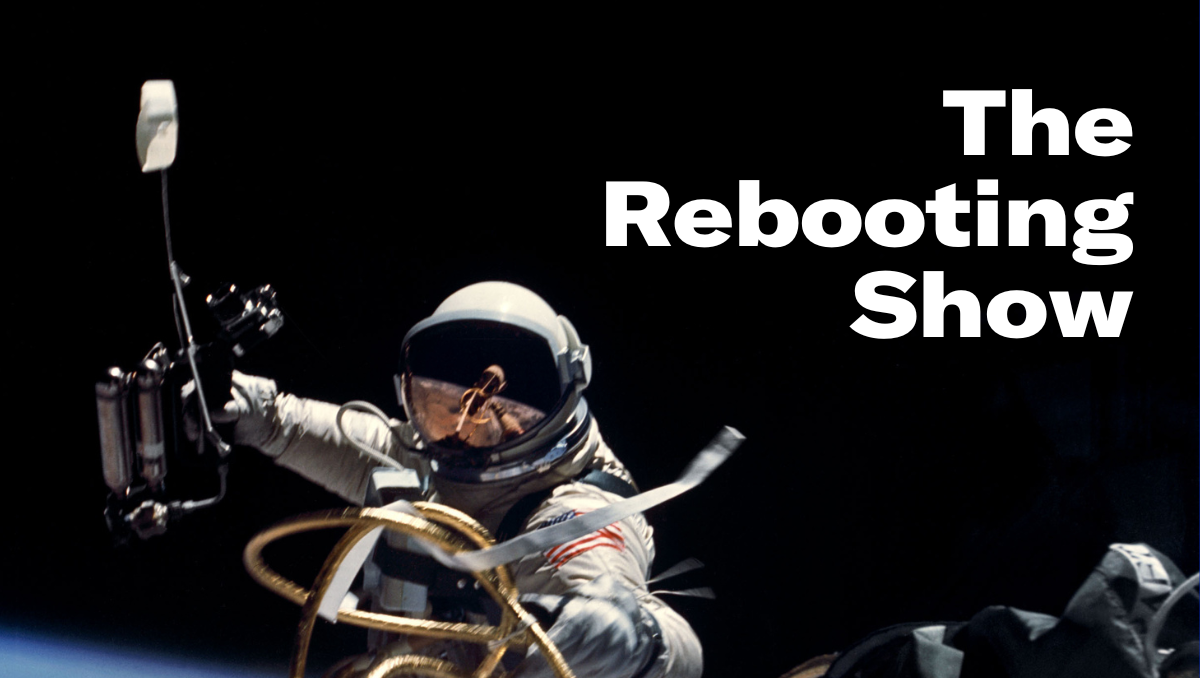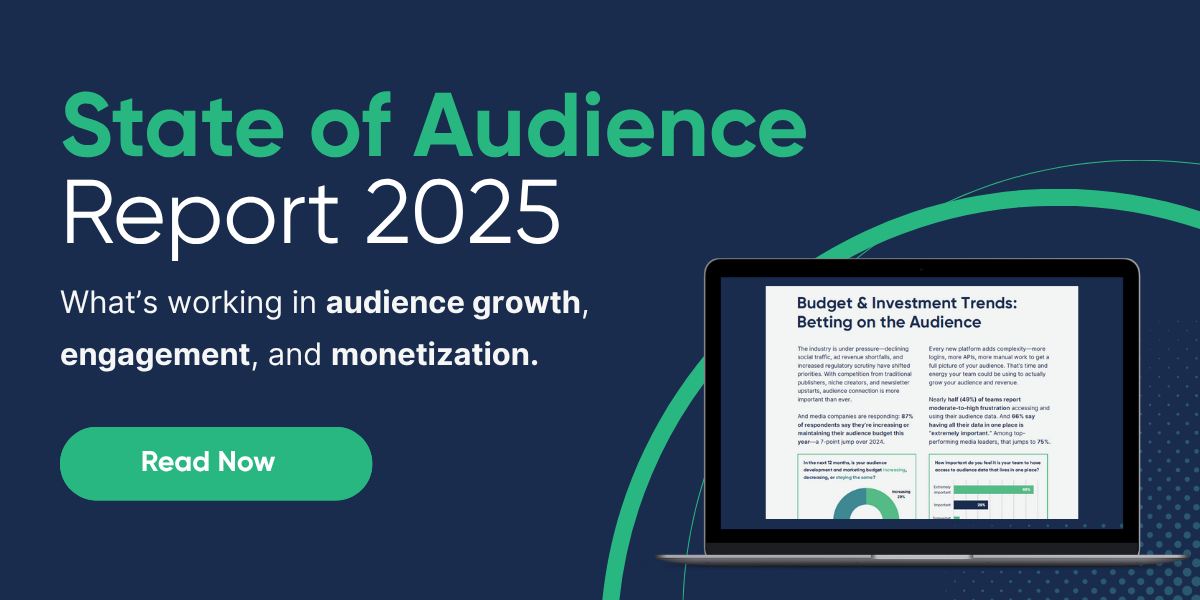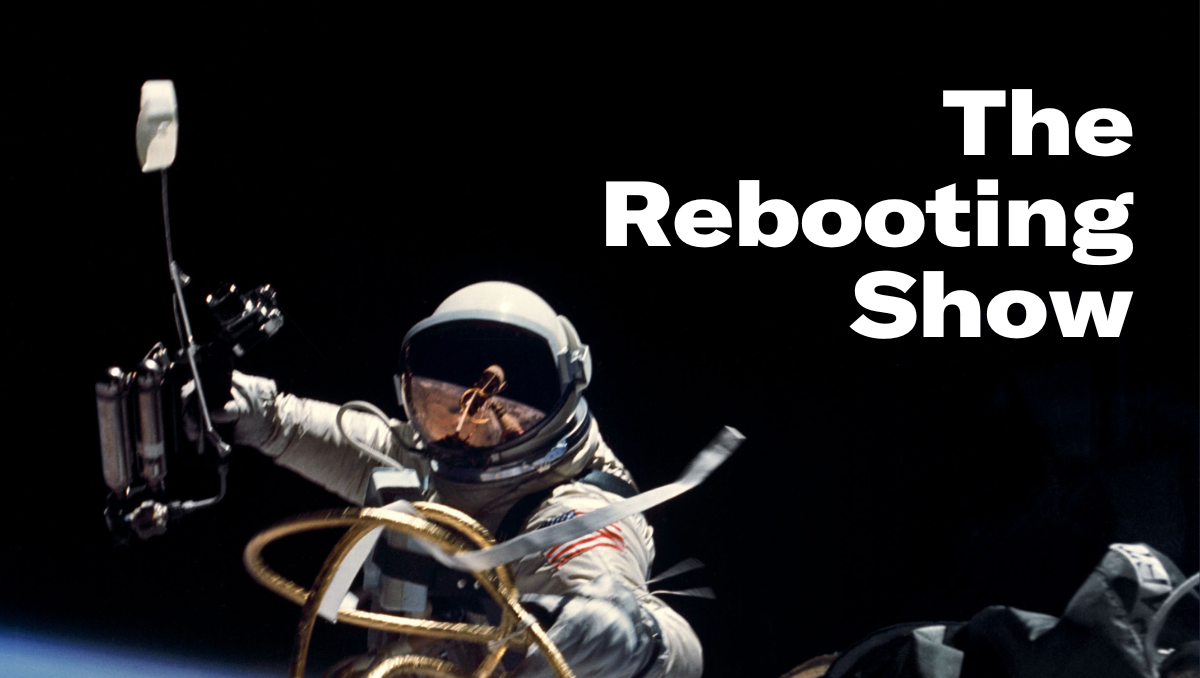Notes on the rebundling
Plus: A conversation with Vox Media president of revenue and growth Ryan Pauley

I’m making my way back from Cannes with a pitstop in Paris this week. I have some thoughts on the current rebundling we’re seeing in media, as well as a new podcast conversation with Vox Media president of revenue and growth Ryan Pauley about Vox’s podcast network success. First up a message from Omeda.

The biggest revenue gap in media? Untapped audience data

Most audience-driven businesses say data is their top competitive advantage. So why are only 9% actually using it well?
The State of Audience 2025 report uncovers the biggest gap in media today: The difference between having data—and actually doing something with it.
Read the report to learn how your peers are closing that gap and winning more revenue, retention, and results.

On this week’s episode of The Rebooting Show, I spoke with Vox Media president of revenue and growth Ryan Pauley about how the publisher has become a podcasting juggernaut, with Pivot, Decoder and Today Explained franchises. Ryan discusses the “Lego approach” that snaps together different business models, with some podcasts as owned and operated and others as partnerships. We also get into the rebundling and how media companies like Vox can link with creators to provide the sales and distribution infrastructure most independent media operators will not build.
Notes on the rebounding
Sitting at the Monocle cafe on Rue Bachaumont in Paris, I wasn’t surprised or even annoyed to see the “no laptops, please” sign. It’s a lost cause for most establishments, but Monocle founder Tyler Brûlé has many bugbears, including laptops at cafes and adults wearing pajamas on planes.
The pretension is the point. Monocle’s convoluted finances show a marginally profitable operation that uses media as leverage for alternative business lines like its branding agencies and fleet of cafes, including the relatively new Paris outpost on a cobblestone street in the Second arrondissement that checks all of the Monocle boxes.
Monocle is something of a harbinger of what’s to come in media, as models leave behind the eyeball economy in favor of treating publishing businesses as brands first and foremost. It takes retail seriously, unlike the licensing airport cash grabs you tend to see. Many publishing brands have been neglected as brands.
That is changing. Few of my conversations with publishers find them excited about the mechanized ad system. So much of marketing will become AI-directed that the way to establish leverage will inevitably be in a services direction. I saw Bustle’s Bryan Goldberg in Cannes at our live podcast at the Dotdash Meredith villa. He promised to return to the podcast to detail how Bustle has overhauled its business away from the eyeball economy.
On a recent crossover podcast episode I did with Peter Kafka of Channels and Ben Smith of Semafor’s Mixed Signals, we discussed the hunt for a Vanity Fair global editorial director in the context of how the job has become more of a brand steward. I didn’t think journalistic chops were as important as party-planning prowess. A brand like Vanity Fair is well past the golden years and onto a new phase of existence where the Oscars party moves from a side dish to a main. You can’t miss on the party in the same way as local news can’t miss on high-school sports. Graydon Carter’s overly self-deprecating memoir details how he took beta blockers and a shot of vodka to calm his nerves for the party.
Nowadays it’s simply expected. I kicked off Cannes last week with a discussion of the reinvention of Cosmo. Editor Willa Bennett — she also runs Seventeen, as a sign of the more with less times — and asked Willa if she’s an influencer. As a journalist, she is required to object. A couple years ago in Cannes, Ben made the point to me that the term “influencer” makes journalists “want to throw up.” Be that as it may, but being a professional means doing things you don’t want to do.
After all, I had a record scratch moment in Cannes in the middle of clubbing mayhem at Bâoli. Hosting a rollicking dinner party at a Riviera clubstaurant was not on the curriculum at j-school. Maybe it should be, because I see publishing brands scrambling to get out of the ads on pages business models of publishing. Nobody knows what’s coming, of course, only it’s safe to say, we are entering into a period of the job of publishing brands will increasingly shift to convening.
I’ve been tracking a new North Star metric for The Rebooting. It’s AAR, or audience activation rate. That’s complied with the raw number and relative percentage of people in what Puck’s Jon Kelly called my “cinematic universe” who have taken a commercial action, either a membership or attended an online forum or downloaded a co-branded research report, or come to an event or private dinner. So far, we have reached over 3,000 people taking actions this year, about 10% of the audience. Passive media is in terminal decline. You have to turn audiences into participants.
This is the reality of where the media is going, in my view. You need to narrow your focus to find leverage in shoulder businesses that often are adjacent to the actual journalism or content.
You need to use what you know to give leverage in who you know. That’s why I think we are entering something of a post-text moment. Whatever is the AI iPhone moment will likely steer clear of screens. Tyler is not alone in wearying of screen time. Audio will be a key mode with agentic AI. And podcasts have blurred with TV. YouTube is a dominant force. And all platforms have left behind the link, without which there isn’t much of an open web. Even the loudest proponents of the open web define is strangely to include CTV and streaming. Nobody wants to talk about webpages.
SMS is an area I’m interested in pursuing more. I partnered with Subtext last week for a big group text campaign tied to Cannes. Lots of metrics are inflated these days, so I tend to focus mostly on what I hear about from people. The Subtext campaign did well by this measurement, and I’m interested in finding new ways to use texting on a regular basis. One of my ideas is to create a participatory column each week with a text group. I believe that group chats are a great form of media.
The All-In “ultra premium tequila” is a good example of how media has become a front business. And in tech, media is becoming an expected part of company strategies. Stripe is the latest to “go direct” with a fake Irish pub interview show. Just like the Vanity Fair editor has to be a good party planner, the modern CEO has to be good at media. So far so good with the Collisons, who debuted with an in depth conversation with Meta CFO Susan Li. These kinds of conversations are qualitatively different than capital j Journalism. Media has been more valuable even if the monetization mechanisms are broken.
My key theory is the growth of podcasting fits squarely in the wheelhouse of tech CEO types. Writing is a pain in the ass. Paul Graham is unique in his capacity as a writer. Most tech people are better at talking. Perhaps that’s why they don’t have much of a high opinion about text content, which is simply commoditized data. New York Times CEO Meredith Levien made the point to correct this “data” as journalistic intellectual property.
At the conversation I held late last week at Dotdash Meredith’s villa, Axios media correspondent Sara Fischer gave Vox Media credit for finding its unique leverage with its podcast network that is giving a glimpse of how the inevitable rebundling could work. Podcasts are power law, giving stars like Kara Swisher and Scott Galloway leverage to have their cake and eat it too. That can get the upside of ownership without the headaches of building media infrastructure.
My conversation with Vox president of revenue and growth Ryan Pauley centered on how Vox is betting on audio, YouTube and events. The norm for many newer brands will be to look to partnerships rather than rebuild capabilities. Nicholas Carlson is leaning on Smooth Ops to handle his ad sales and brand partnerships.
I’m taking a similar approach with The Rebooting with a new partnership with Clear Sky Collective to be my partner on partnerships and program delivery. I don’t see the point in rebuilding the same infrastructure, with its fixed costs and inefficiencies, as legacy competitors; better to tap into existing infrastructure. I find more often now people are impressed with how few full-time employees you have than see big numbers of FTEs as a sign of progress.
(By the way, this is a good time to get in touch with me to discuss partnerships.)
Substack is again looking to raise money. I find Substack fascinating and frustrating. It’s fascinating because it has become synonymous with independent media. Derek Thompson’s defection from The Atlantic to Substack felt less of a shock and more overdue. He’s built his own cinematic universe with Abundance, his columns and Plain English. Meredith is a pro’s pro, so she sidestepped equations about losing someone like Ezra Klein, who would be a shoe-in for a Substack-and-YouTube solo endeavor.
The economic upside is obvious, since The Atlantic’s recent hiring spree included the crazy data point that it was offering $200,000 salaries. One of the limiting factors of independent media is how low expectations can be. If I do a session at a journalism conference, I’m usually asked if “you can make a living.” Maybe set our sights higher.
I find that when I talk to non-journalists who are building Substack’s and other media properties they aspire to more. For all the talk about journalist Substackers, there are incredibly lucrative subject matter experts who are building substantial businesses with millions in profits. The difference is they treat these businesses like businesses.
Substack’s frustrating because it is synonymous with email and yet isn’t very good at it. The basics of email are missing, like segmentation and automations. Instead, Substack is perhaps sensibly focused on a post-text future. Email newsletters were very popular during the post-pandemic period. They have come back down to earth. Organic growth has become difficult. Ad metrics are a complete mess. And there are simply too many low quality newsletters ginned up by the passive-income crowd that are just as much arbitrage as SEO strategies.
The survivors and thrivers will build multifaceted brands that go well beyond newsletters. It’s no longer enough to be good at one thing. You have to be able to pet dogs and kiss babies at the same time.
Thanks for reading. Send me a note with feedback by hitting reply.
For partnership information, please check out this backgrounder and get in touch: bmorrissey@therebooting.com.



